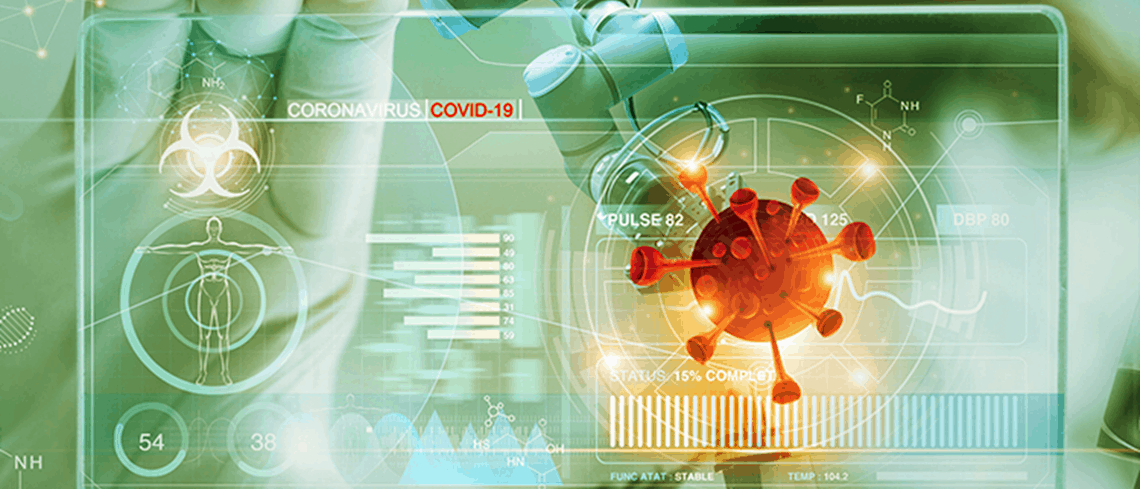New Study reveals hospital equipment as hotspots for Covid-19
We all know that there is a virus out there but do we understand the complexities involved with the detection process especially around hospital equipment?
Dilly dallying, when it comes to understanding the severe acute respiratory syndrome (SARS COV-2) is a dangerous thing for it can hinder and even decelerate the lifesaving process. Novel and unambiguous studies can help us understand this pandemic in a better way, as this virus is still new and we are learning about it.
Tied restrictions
The moral and ethical restrictions greased with each study, albeit for the good of humanity, are a dilemma to deal with for the scientific society. The race to cure or effectively contain the spread of covid-19 is going on for months now but no answer seems meaningful and no way definite. We need to continuously equip ourselves with the latest in this field in order to assure our safety and of those around us. Though ambiguity is a considerable factor in these studies, but we have to make with what we have.
It was the studies that revealed that this virus can survive on surfaces for different period of times and if such is the case then every surface that gets high audience can provide safe haven to these microorganisms. This study also pointed towards a probable increase in nosocomial spread as hospitals are inundated with patients suffering from SARS-COV2.
Rapid Detection – Less contamination
Early detection of microorganisms is the key to eradicating contact points across different hospitals surfaces and containing the spread of particularly, COVID-19. Real time reverse transcriptase polymerase chain reaction (RT-PCR) is a widely used method to detect the virus when hospital wards are combed for contamination detection. The process on the whole is a time consuming one and takes up about 2.5 to 4 hours in which deactivation of virus, extraction of nucleic acid, and amplification of RNA is done.
A rapid method
Because it was taking too much time, experts came up with another method known as loop mediated isothermal amplification (LAMP) which has amazingly brought down the detection time to 45 minutes and even eliminates the process of RNA extraction thereby preventing damage. A lot of surfaces were examined for contamination traces from bed rails, ECG monitors, to bathroom door handles.
The result was a staggering one as research showed that about 70% of tests came back positive and displayed viral contamination of ECG fingertips. Second highest risk when it came to surfaces with high levels of virus, was related to bed rails.
How to clean these hotspots?
As the basis of conclusion, these surfaces were regarded as ultra-highly contaminated and it was therefore recommended by the centers for disease control and prevention to clean these surfaces with the recommended product. Though hospitals use antibacterial wipes as a means to eliminate points of contact but other products can be used too.
There are a lot of surfaces within the hospital which require the use of a disinfectant spray timely so that immaculate cleanliness can be ensured as hospitals are temporary homes to already infected or diseased individuals. Studies also revealed that germs were carried from one site to another due to the contaminated hands.
This brings us to another point that should be followed throughout hospitals religiously – hand hygiene. Contaminated hands can not only transfer germs from surface to surface but also from surface to patients and from patients to equipment.
Centers for disease control and prevention (CDC) recommends washing hands for 20 seconds with bar soap and water in order to kill germs present on your hand. This method is regarded as the most effective one but if there is no water available, then one can also use an alcohol based hand sanitizer to maintain hand hygiene.
Reducing nosocomial spread
Utilizing all these methods, equipment hotspots can be eliminated and nosocomial spread can be reduced or even completely stopped. Researchers concluded that all these surfaces including bathroom door handles, ECG monitor fingertips, and bed rails should be disinfected regularly and thoroughly. Hospital acquired infections are already a cause of death for many people around the globe, not paying attention to this study would only add to that problem especially in the middle of a pandemic.
SARS COV-2 has an outer protective covering made up of fat and this can be removed by washing hands regularly and frequently for 20 seconds as recommend so therefore, we would again like to reiterate the importance of washing hands, be it a hospital, home, or your place of work.
So this is all about equipment hotspots in hospitals. If you still have any questions, you can let us know right away, we’ll be more than happy to help you out.
